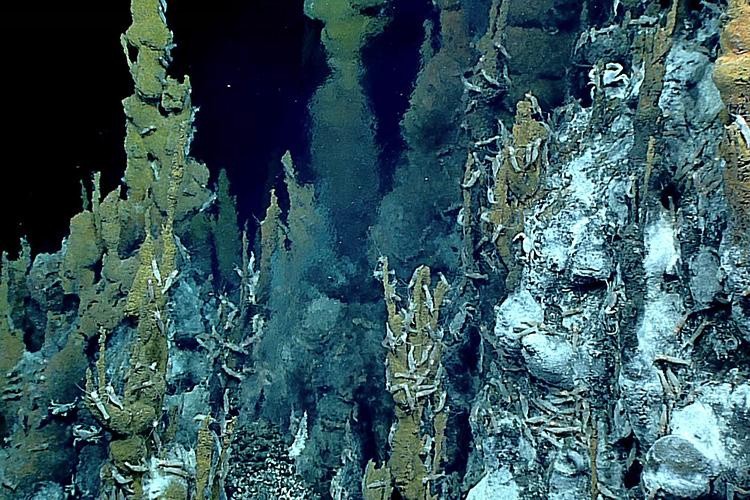
The name 'Mariana Trench' is usually described as 'mysterious,' and often 'treacherous.' However, over the course of the century, dedicated scientists have been exploring the said deep sea feature. As of date, a general collection of data about the Mariana Trench has already been published, and information about its depth, location, and the animals that live in it are readily accessible.
Here are some commonly asked questions about Mariana Trench:
What is the Mariana Trench?
The Mariana Trench, Earth's deepest oceanic trench and home to the planet's lowest points, stretches across the Western Pacific, east of the Mariana Islands near Guam. This crescent-shaped abyss is renowned for its unique environments, housing vents emitting sulfur and carbon dioxide, active mud volcanoes, and marine life adapted to crushing pressures, exceeding sea level by 1,000 times.
How Deep is 'Deep' and Where is the Mariana Trench?
Challenger Deep, the trench's deepest point, lies within the hadal zone, a world regarded as alien to most, harboring aquatic species uniquely suited for life in extreme cold, darkness, and high pressure.
Located in the western Pacific Ocean, between the Philippines and Hawaii, approximately 124 miles east of the Mariana Islands, the trench plunges to a depth of 35,876 feet, earning its place in the hadal zone, a reference to Hades, the Greek underworld.
Challenger Deep คือจุดที่ลึกของร่องลึก Mariana Trench สถิติล่าสุด 2020 เท่าที่มนุษย์วัดได้คือ 10,994 เมตร
— Ⓞⓧⓨⓖⓔⓝ_ⓣⓞⓣⓩ ™ (@Oxygen_totz) October 22, 2023
1 ในบุคคลที่เคยลงไปคือ James Cameron ผู้กำกับ Titanic เมื่อปี 2012 pic.twitter.com/UC4V8tZT7X
Adding to its intrigue, the second-deepest spot in the world's oceans, Sirena Deep, is found within the Mariana Trench, reaching a profound 35,462 feet, situated 124 miles to the east of Challenger Deep.
How Did the Mariana Trench Formed?
The trench's formation stems from the dynamics of a subduction zone, where colossal oceanic crust plates, specifically the ancient Pacific plate and the smaller, younger Philippine plate, collide. This collision forces one plate beneath the other, creating a deep trench above the point where the sinking crust bends. The Pacific crust is about 180 million years old where it descends into the trench, contrasting with the relatively youthful and smaller Philippine plate.
What Animals Live in It?
In the most extreme deep-sea environment, a multitude of species have managed to thrive. These remarkable organisms have evolved unique adaptations to survive harsh conditions, including total darkness, extreme water pressure, and frigid temperatures. Many of these deep-sea inhabitants have foregone the need for eyesight and lack a swim bladder when they have evolved, showcasing their exceptional ability to exist in such a demanding ecosystem.
Sea Cucumbers
Sea cucumbers, resembling their namesake, dwell on the ocean floor globally. They possess a mouth encircled by tentacles and the ability to flatten and reconstitute themselves. Despite lacking a brain, they sense light and touch, scavenging plankton and organic matter, functioning as natural recyclers.
Mariana Snailfish
The Mariana snailfish, a pale, tadpole-like creature, thrives in extreme depths with transparent skin, robust organs, and potential blindness. It contends for the deepest fish title, dining on small crustaceans in the Mariana Trench. Female snailfish have notably large eggs.
Amphipods
Mariana Trench amphipods exhibit deep-sea gigantism, growing much larger than their shallow-water counterparts, like giant squid and Japanese spider crabs. They scavenge on large animal carcasses, consume algae, and were found to ingest plastic, revealing microplastic presence even in the ocean's deepest realms.
Aphyonids
Aphyonids, distinct from amphipods, are fish. The term "fish" is used for one species, "fishes" for multiple species. Multiple genera exist in this family. They share the appearance of ghostly white tadpoles, with gelatinous scaleless skin, pale bulging eyes, and live births. Aphyonids lack swim bladders, aiding their deep-sea habitation.
Acorn Worms
Acorn worms, resembling earthworms with a proboscis, eat sand, extracting organic matter. Some in the family Torquaratoridae inhabit the Mariana Trench seafloor with gelatinous bodies, breathing like fish.
Jellyfish
In the Mariana Trench, an unidentified jellyfish species with a clear body, red stripes, and luminous yellow orbs was discovered in 2016. It belongs to the Crossota genus, which is widely distributed worldwide. Jellyfish, dating back 550 million years, are one of the oldest multi-organ animal groups, predating nearly all other animals except sponges. To put this in perspective, for 190 million years, the world had jellyfish but no trees.
Polychaetes
Polychaete worms, resembling centipedes, exhibit diverse appearances and behaviors depending on their family. They come in vibrant colors with leg-like parapodia covered in bristles. New species were found in the Mariana Trench in 2020.
Related Article : Deep-Sea Creatures that Dwell North of Mariana Trench
© 2026 NatureWorldNews.com All rights reserved. Do not reproduce without permission.





